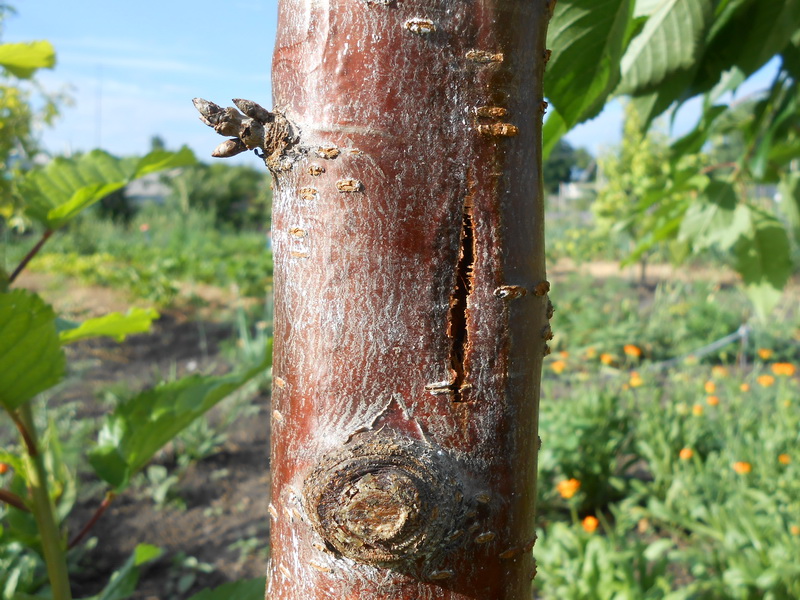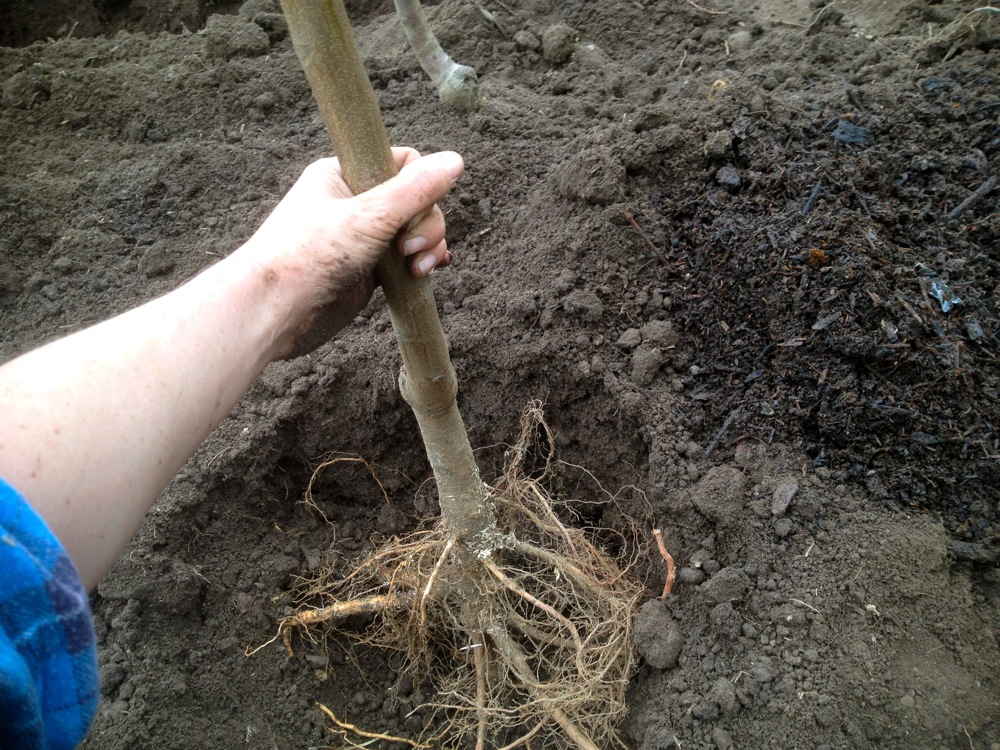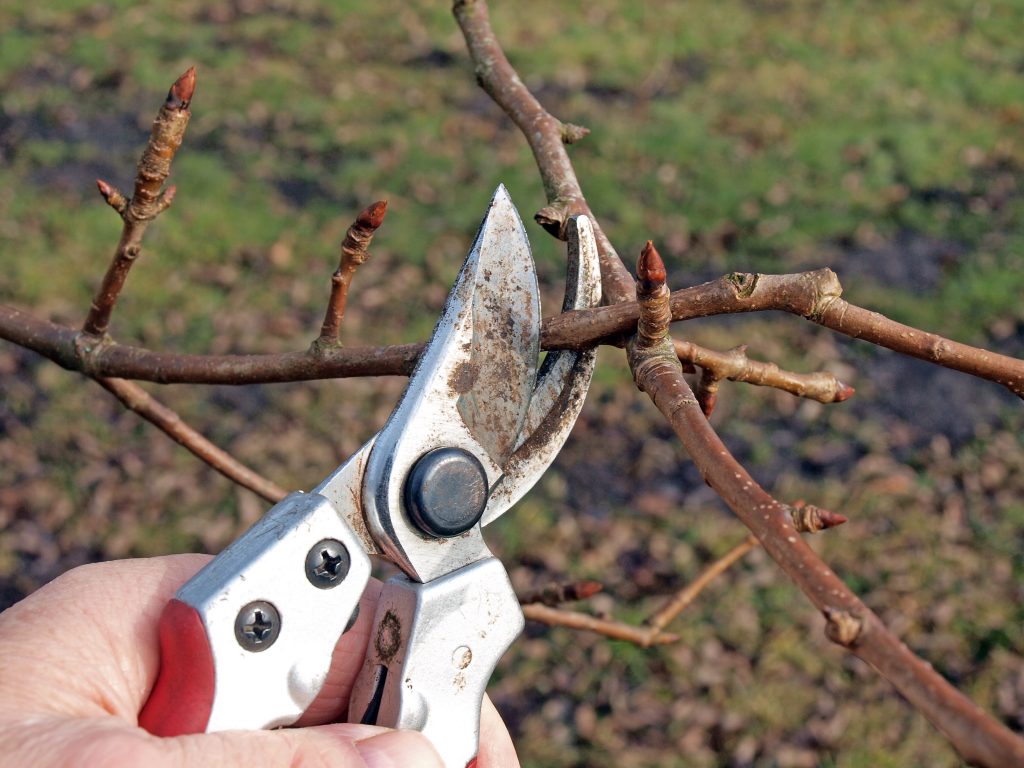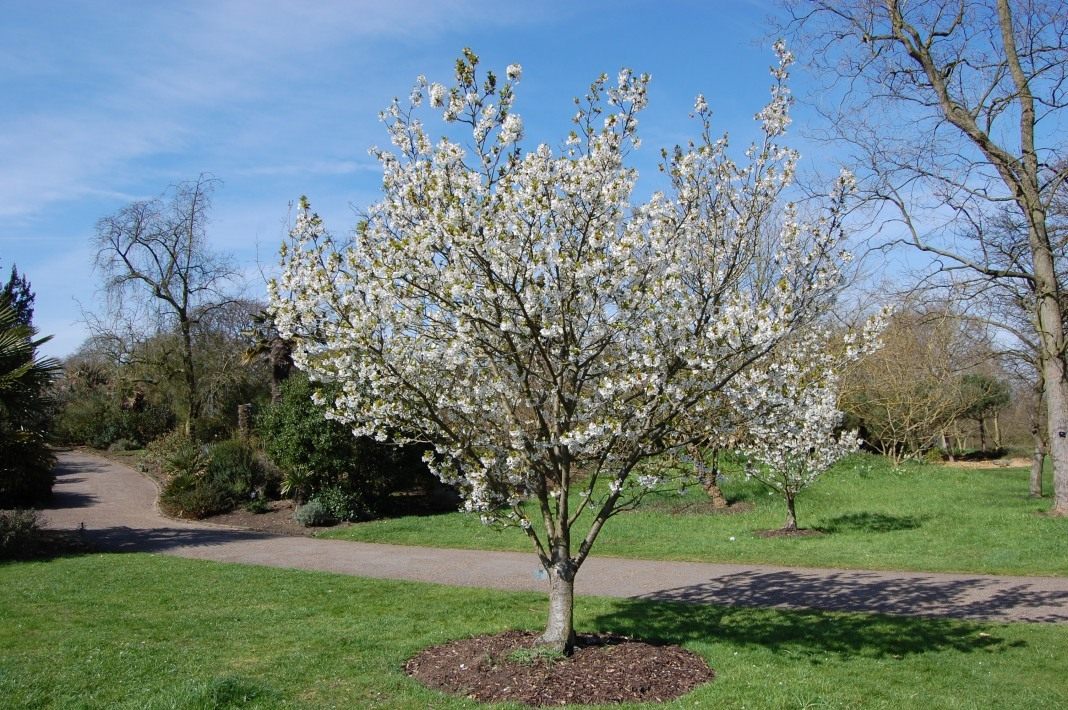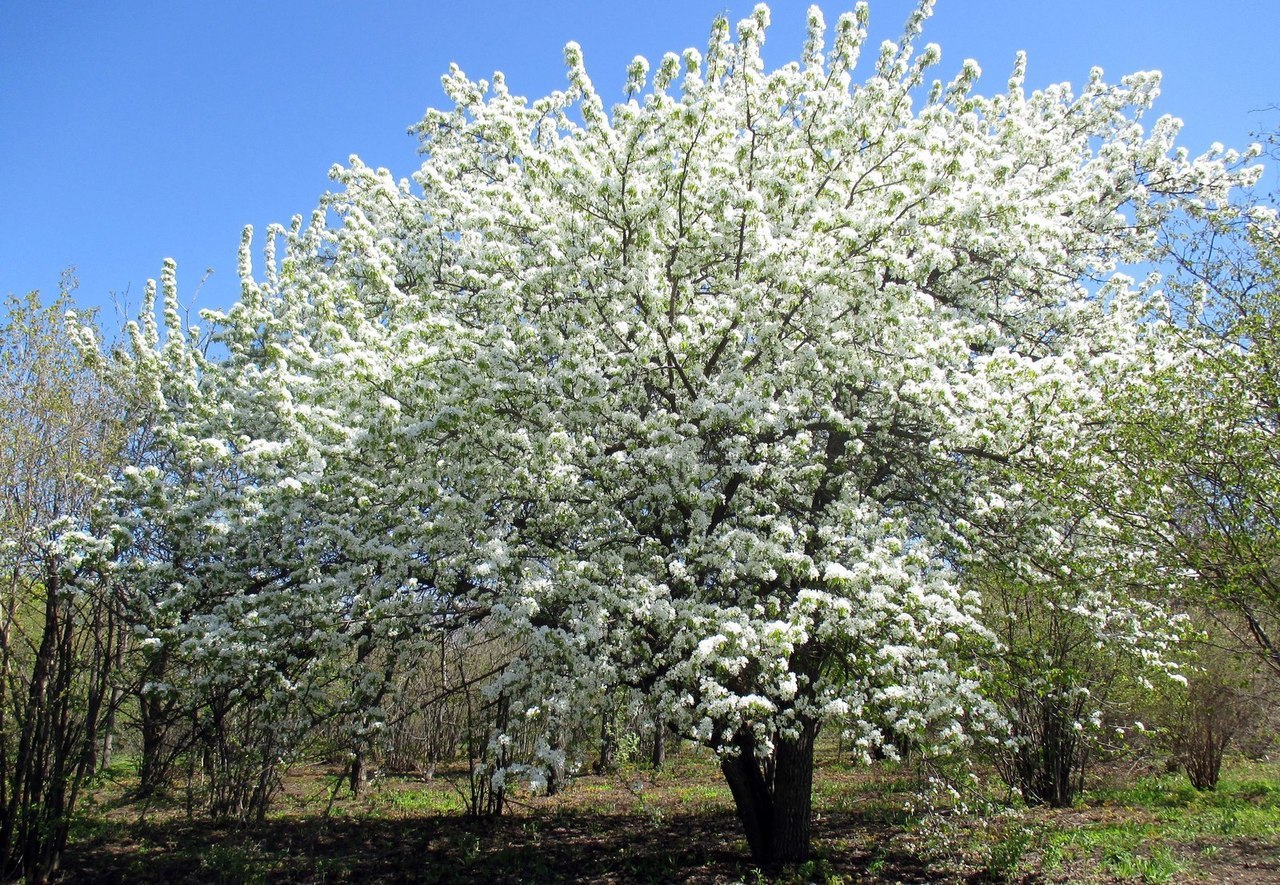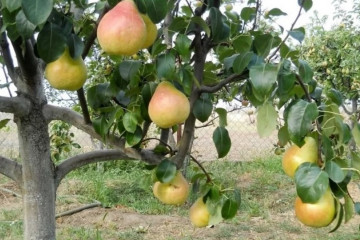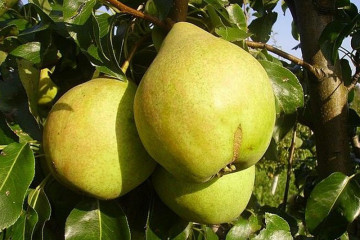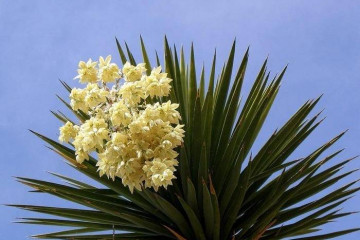Why pear does not bear fruit - causes and their elimination
Content:
Many gardeners consider the pear to be a capricious crop. She often gets sick, freezes, and in some circumstances stops blooming and does not bear fruit. Sometimes the tree blooms profusely, but there is no harvest.
Why pear doesn't bloom
There can be many reasons why a pear does not bloom and subsequently does not bear fruit.
No pollinator
If a pear is planted in a garden in a single copy, it is quite possible to make it bloom, but it will not bear fruit. This is due to the fact that the fruit and berry crop is cross-pollinated. To produce pears each year, at least two trees should be planted. The second will act as a pollinator, and bees and other insects will do all the pollination work. It is necessary to select varieties for planting in such a way that they have the same flowering period.
Freezing
If the soil freezes to a depth of 20-25 cm in the absence of snow cover, the root system of the pear may freeze. Such a culture will greatly lag behind in development, it may not bloom, and it will be possible to forget about fruiting.
In order not to wonder why the pear does not bloom, it should be mulched before the fall frosts.
Since no gardener can solve the problem with the weather, it is important to select the right varieties.
Incorrect feeding
If a young pear does not bloom well and does not bear fruit, it may lack feeding. If the plant is planted on poor soil, the tree does not have enough resources to develop normally. The lack of flowering signals a deficiency of potassium, phosphorus and nitrogen.
In the summer, it is recommended to fertilize the culture several times:
- the first feeding is done when the kidneys begin to wake up;
- re-fertilization is required when flowering occurs;
- the third feeding is done when flowering ends;
- the fourth and fifth times carry out foliar dressing in the summer.
For the first three dressings, nitrogen fertilizers are used (solution of urea or bird droppings). In the latter case, phosphorus and potash compositions are used.
Incorrect fit
Sometimes the answer to the question why the pear does not bloom lies in the fact that the culture was transplanted incorrectly.
The most important thing that cannot be done is to deeply deepen the seedling. In this case, there will be a significant delay in the development of culture. The fruiting period will start 5-6 years later. The frost resistance of the tree will also decrease. At the same time, the pear itself may well look outwardly healthy.
Diseases and pests
Columnar or any other kind of pear may not flower or produce a poor yield due to pests.In particular, because of the honeydew, which, after the onset of cold weather, begins to feed on pear juice. After such an attack, the pear for the next year will not bloom and will not bear fruit.
Flowering may not occur due to:
- black cancer;
- fruit rot;
- scab.
Timely identification and elimination of the problem will preserve fertility.
Incorrect cropping
Another reason why a pear can stop blooming and bearing fruit is the wrong pruning of the plant and its complete absence. Every gardener should know as a keepsake how to properly prune pear trees:
- remove the tops of the shoot;
- eliminate the lower branches in the places of forks;
- remove branches that grow near the trunk or too close to each other;
- cut off excess young growth.
If the crop is not pruned regularly, it will begin to thicken and receive little light. In such circumstances, it is not worth wondering why there are no fruits on the pear.
Lack of lighting
If, after seven years of planting, the pear has not bloomed, it is highly likely that the planting site was initially chosen incorrectly. With a lack of sunlight, the plant will not have enough energy to form flowers. Such trees are much less resistant to winter and most often die within the first few years after planting.
Increased soil moisture
An increased soil moisture reading can also cause the pear tree to stop blooming. This happens when the plant is planted in lowlands, wetlands and in areas where groundwater is located in close proximity to the soil surface.
Unfavorable weather conditions
A snowless, but frosty winter can cause the root system to freeze. Even if the pear does not die, it will feel weakened and the appearance of flowers and fruits is unlikely.
A similar problem will arise if frosts occur during the laying of flower buds.
Varietal features
The lack of flowering and fruiting may be due to the wrong selection of the variety. Regionalized plant species should be chosen for specific localities.
When the pear begins to bear fruit
A culture such as a pear does not have a clear age for the onset of fruiting. This indicator for different varieties varies widely. So, for example, the Annushka variety gives its first fruits within 1-2 years after planting, the Chizhevsky variety, Rogneda and Yakovlev (Memory of Yakovlev) - after 3-4 years, the Rossoshanskaya late - after 5-6 years.
When cultivating varieties Bergamot, Favoritka or Limonka, you will have to wait at least 7 years at all.
Duration of fruiting
The duration of fruiting is from 10 to 50 years and depends not only on the variety, but also on the growing conditions, compliance with the rules for caring for the crop and the place of growth.
Flowering stimulation methods
Answering the questions why the pear does not bear fruit and what to do to solve the problem, one cannot ignore the mention of some ways to stimulate the flowering of the culture:
- Periodically hilling the tree, making sure that the root collar is not too high and does not turn out to be too deep.
- If the bark has cracked due to frost, it should be covered with garden pitch or clay.
- Use insecticides regularly for preventive purposes.
- Provide the pear with reliable draft protection.
- Increase soil fertility using organic fertilizers. Compost, manure and peat are best suited for this purpose.
Problem prevention
Any problem, including the lack of fruiting in a pear, is easier to prevent.
When landing
For landing, you need to choose a place well-lit by the sun, where there are no sharp gusts of wind. If the site is located in a lowland, an earthen embankment should be made for planting a pear. This will avoid the accumulation of moisture in the root zone.
Care features
In the process of caring for a plant, it is recommended to adhere to the following simple rules:
- Water the trees on average once every two weeks, pouring 5-7 buckets of water on each mature tree.
- If there is a risk of freezing the roots, mulch the culture in the autumn.
- In the springtime, carry out preventive treatment of pear trees from parasites and diseases.
- Until the beginning of the fruiting period, do not prune the crop.
Variety selection
Most of the problems associated with freezing trees in winter arise when planting heat-loving varieties in regions with harsh winters. Before planting a crop on the site, it is strongly recommended to inquire about what growing conditions are comfortable for the selected variety.
Gardening tips
In addition to the above, experienced gardeners recommend:
- Use rye to warm tree roots in winter. For this, cereals should be sown directly under the tree, and in the fall they should be mowed and not harvested. The rye roots that remain in the soil will improve the quality of the soil as it decomposes.
- If the groundwater on the site is too deep, the pear, despite the characteristics of the variety, will begin to bear fruit only when its root system reaches the aquifer.
- With proper care, some pear varieties can produce crops for up to 100 years.
The lack of flowering and fruiting of a pear is not a reason to give up. It is important to understand the cause of the problem and try to fix it.

